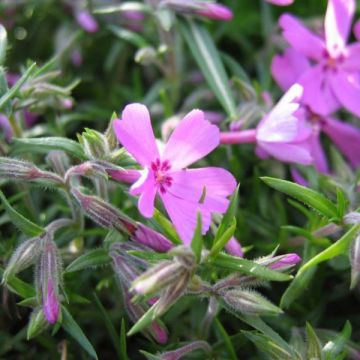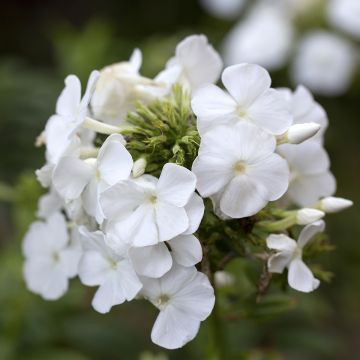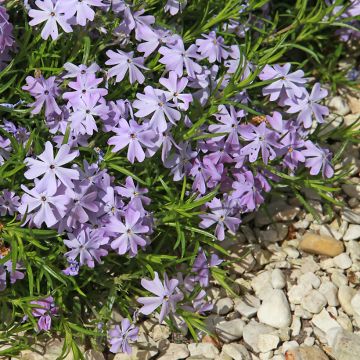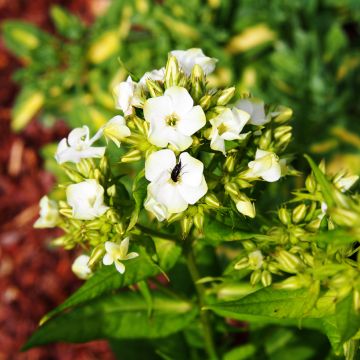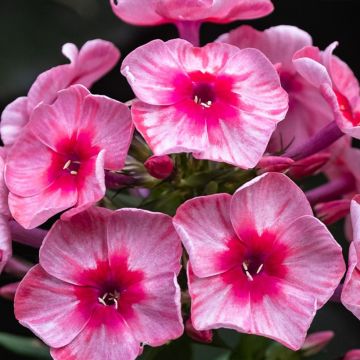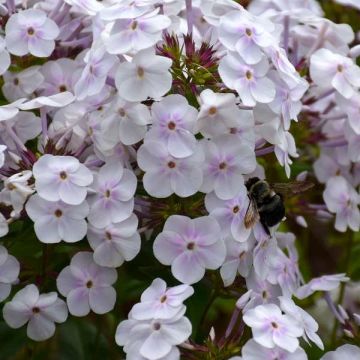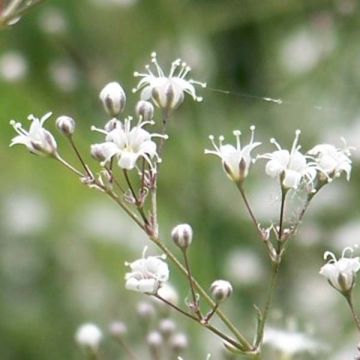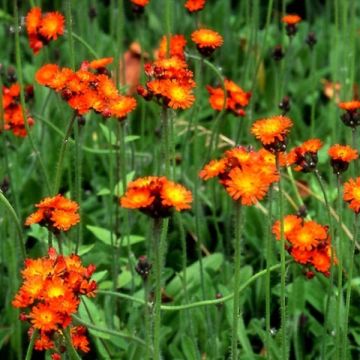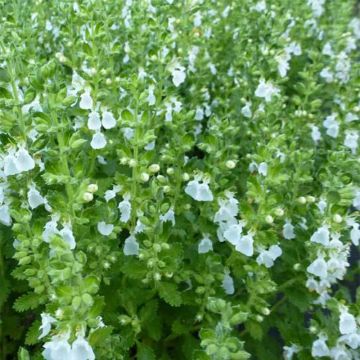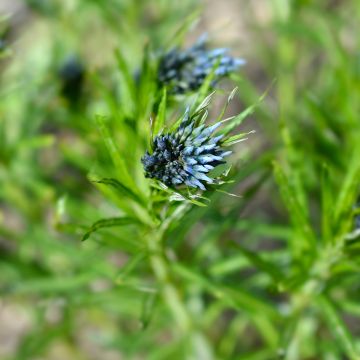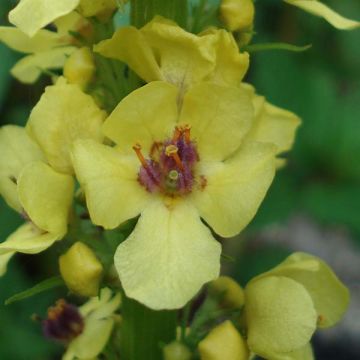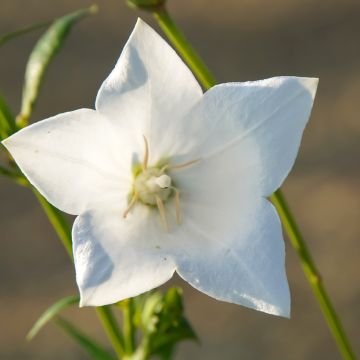

Phlox paniculata Elisabeth
Phlox paniculata Elisabeth
Phlox paniculata Elisabeth
Garden Phlox, Summer Phlox, Perennial Phlox
The phlox I received doesn't have variegated leaves but uniformly green ones. Another labeling mistake!
Armelle, 11/11/2022
This item cannot be shipped to the selected country
Delivery charge from €5.90
More information
Schedule delivery date,
and select date in basket
This plant carries a 12 months recovery warranty
More information
We guarantee the quality of our plants for a full growing cycle, and will replace at our expense any plant that fails to recover under normal climatic and planting conditions.
From €5.90 for pickup delivery and €6.90 for home delivery
Express home delivery from €8.90.
Does this plant fit my garden?
Set up your Plantfit profile →
Description
Phlox paniculata 'Elisabeth' is a delightful variety of panicled phlox with variegated foliage: this rather compact plant is adorned with beautiful leaves widely marginate with white-cream that serve as a backdrop for charming panicles of vivid pink flowers, which are slightly lighter in the centre. Decorative even when not in flower, this phlox stands out in sunny flower beds. Place it in the sun, in good fertile garden soil that remains damp.
Phlox paniculata 'Elisabeth', introduced from the Netherlands in 2003, belongs to the family of Polemoniaceae. It is a perennial herbaceous plant with good longevity, with a woody stump, which develops from spring into a small bushy clump with a rather upright habit, composed of leafy stems. The plant will reach an average height of 60-65cm (24-26in) when in flower and 40cm (16in) in width. The stiff and sturdy stems, green in colour, are covered with alternate, simple, ovate and lanceolate, dentate leaves, measuring 10-12 cm (4-5in) in length. The young leaves, located at the top of the stems, are almost white. The mature leaves, on the other hand, are a rather dark green-grey, marked by a wide irregular white-cream margin.
The flowering period extends from June-July to August, provided that faded inflorescences are removed. The pretty pink flowers, with tubular corollas flaring into 5 petals, measure 3.7 to 4 cm (2in) in diameter. They are grouped at the top of sturdy stems in pyramid-shaped, nectar-rich and nectar-bearing panicles.
Phlox paniculata are common perennial plants in cottage gardens, because their legendary simplicity and generosity are almost unmatched in perennial flower beds, to the point where one sometimes wonders what was planted in flower gardens before their discovery. They work well with all kinds of plants, but we particularly like them next to roses, astilbes, and grasses. They are also enhanced by silver, grey, or purple foliage: artemisias, cinerarias, Stachys, or Amaranthus Velvet Curtains. The 'Elisabeth' phlox, decorative from spring to autumn and of modest stature, can also decorate the patio or balcony, planted in a beautiful pot.
Report an error about the product description
Phlox paniculata Elisabeth in pictures
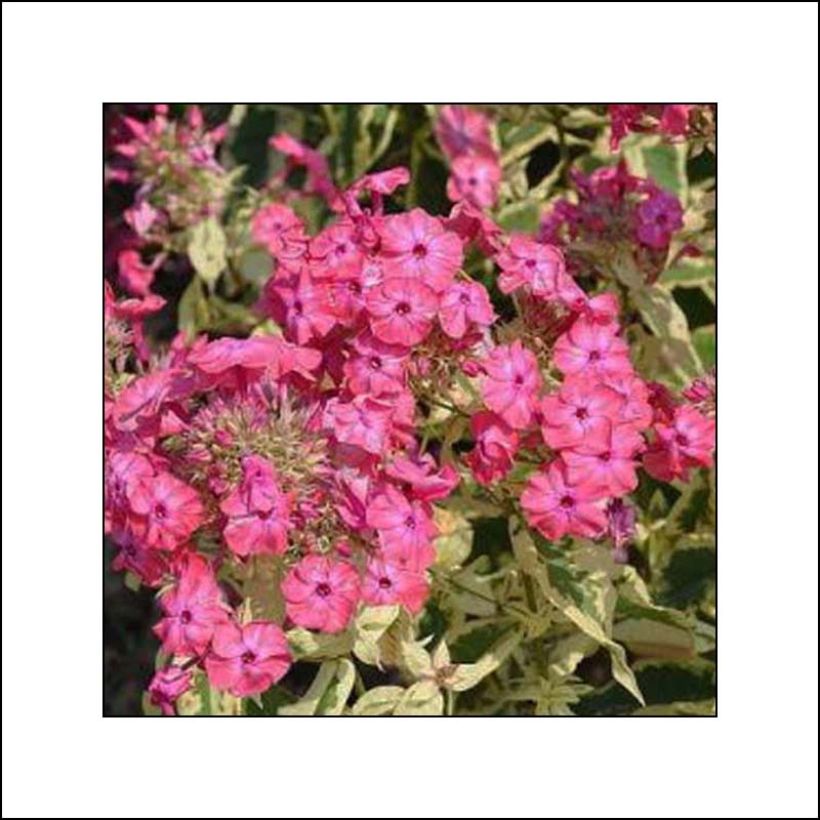

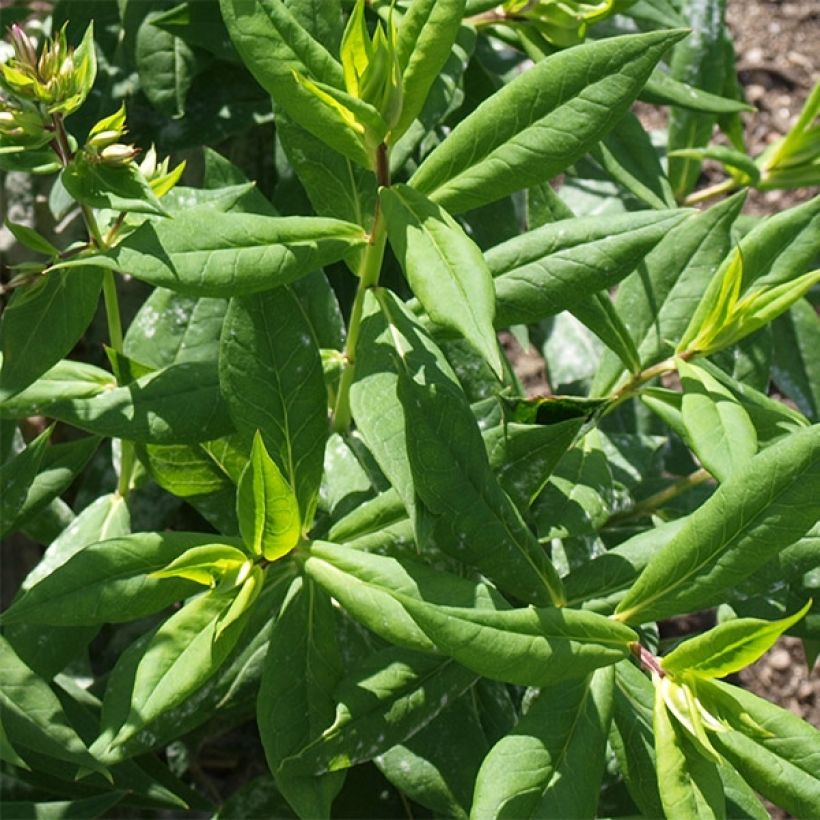

Flowering
Foliage
Plant habit
Botanical data
Phlox
paniculata
Elisabeth
Polemoniaceae
Garden Phlox, Summer Phlox, Perennial Phlox
Cultivar or hybrid
Other Phlox
Planting and care
Phlox paniculata are easy-to-grow plants in full sun, in deep ordinary soil that does not dry out. Phlox paniculata 'Elisabeth' prefers a damp and rich soil, even clay soils that have good drainage. It needs sun to flower well. A too dry or too hot environment makes the foliage more susceptible to powdery mildew. Planted in the sun in a climate with hot summers, it will require regular watering and mulching at the base. Pruning faded inflorescences promotes a second flowering at the end of the season. Protect young plants from slugs, which are fond of their tender shoots.
Planting period
Intended location
Care
-
, onOrder confirmed
Reply from on Promesse de fleurs
Summer flowering perennials
Haven't found what you were looking for?
Hardiness is the lowest winter temperature a plant can endure without suffering serious damage or even dying. However, hardiness is affected by location (a sheltered area, such as a patio), protection (winter cover) and soil type (hardiness is improved by well-drained soil).

Photo Sharing Terms & Conditions
In order to encourage gardeners to interact and share their experiences, Promesse de fleurs offers various media enabling content to be uploaded onto its Site - in particular via the ‘Photo sharing’ module.
The User agrees to refrain from:
- Posting any content that is illegal, prejudicial, insulting, racist, inciteful to hatred, revisionist, contrary to public decency, that infringes on privacy or on the privacy rights of third parties, in particular the publicity rights of persons and goods, intellectual property rights, or the right to privacy.
- Submitting content on behalf of a third party;
- Impersonate the identity of a third party and/or publish any personal information about a third party;
In general, the User undertakes to refrain from any unethical behaviour.
All Content (in particular text, comments, files, images, photos, videos, creative works, etc.), which may be subject to property or intellectual property rights, image or other private rights, shall remain the property of the User, subject to the limited rights granted by the terms of the licence granted by Promesse de fleurs as stated below. Users are at liberty to publish or not to publish such Content on the Site, notably via the ‘Photo Sharing’ facility, and accept that this Content shall be made public and freely accessible, notably on the Internet.
Users further acknowledge, undertake to have ,and guarantee that they hold all necessary rights and permissions to publish such material on the Site, in particular with regard to the legislation in force pertaining to any privacy, property, intellectual property, image, or contractual rights, or rights of any other nature. By publishing such Content on the Site, Users acknowledge accepting full liability as publishers of the Content within the meaning of the law, and grant Promesse de fleurs, free of charge, an inclusive, worldwide licence for the said Content for the entire duration of its publication, including all reproduction, representation, up/downloading, displaying, performing, transmission, and storage rights.
Users also grant permission for their name to be linked to the Content and accept that this link may not always be made available.
By engaging in posting material, Users consent to their Content becoming automatically accessible on the Internet, in particular on other sites and/or blogs and/or web pages of the Promesse de fleurs site, including in particular social pages and the Promesse de fleurs catalogue.
Users may secure the removal of entrusted content free of charge by issuing a simple request via our contact form.
The flowering period indicated on our website applies to countries and regions located in USDA zone 8 (France, the United Kingdom, Ireland, the Netherlands, etc.)
It will vary according to where you live:
- In zones 9 to 10 (Italy, Spain, Greece, etc.), flowering will occur about 2 to 4 weeks earlier.
- In zones 6 to 7 (Germany, Poland, Slovenia, and lower mountainous regions), flowering will be delayed by 2 to 3 weeks.
- In zone 5 (Central Europe, Scandinavia), blooming will be delayed by 3 to 5 weeks.
In temperate climates, pruning of spring-flowering shrubs (forsythia, spireas, etc.) should be done just after flowering.
Pruning of summer-flowering shrubs (Indian Lilac, Perovskia, etc.) can be done in winter or spring.
In cold regions as well as with frost-sensitive plants, avoid pruning too early when severe frosts may still occur.
The planting period indicated on our website applies to countries and regions located in USDA zone 8 (France, United Kingdom, Ireland, Netherlands).
It will vary according to where you live:
- In Mediterranean zones (Marseille, Madrid, Milan, etc.), autumn and winter are the best planting periods.
- In continental zones (Strasbourg, Munich, Vienna, etc.), delay planting by 2 to 3 weeks in spring and bring it forward by 2 to 4 weeks in autumn.
- In mountainous regions (the Alps, Pyrenees, Carpathians, etc.), it is best to plant in late spring (May-June) or late summer (August-September).
The harvesting period indicated on our website applies to countries and regions in USDA zone 8 (France, England, Ireland, the Netherlands).
In colder areas (Scandinavia, Poland, Austria...) fruit and vegetable harvests are likely to be delayed by 3-4 weeks.
In warmer areas (Italy, Spain, Greece, etc.), harvesting will probably take place earlier, depending on weather conditions.
The sowing periods indicated on our website apply to countries and regions within USDA Zone 8 (France, UK, Ireland, Netherlands).
In colder areas (Scandinavia, Poland, Austria...), delay any outdoor sowing by 3-4 weeks, or sow under glass.
In warmer climes (Italy, Spain, Greece, etc.), bring outdoor sowing forward by a few weeks.

































